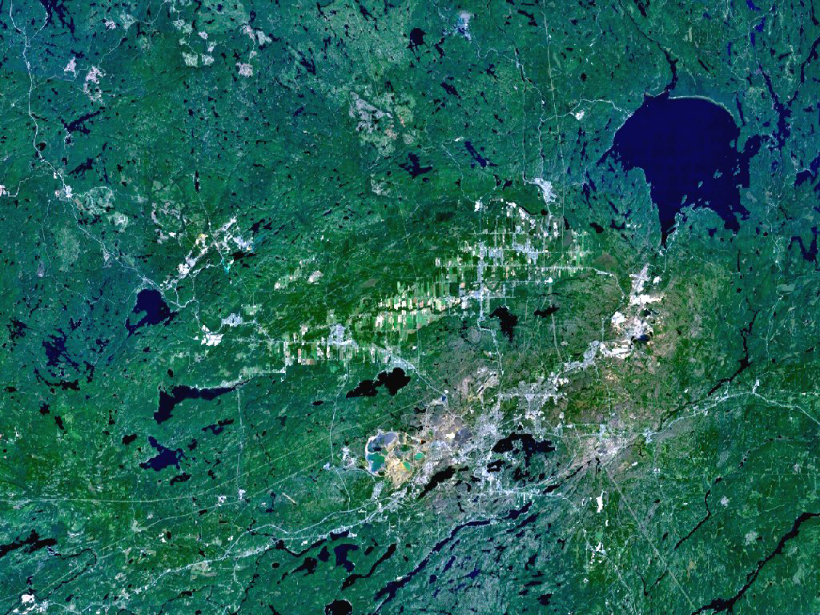Source: Journal of Geophysical Research: Planets
Approximately 1.85 billion years ago, a comet up to 15 kilometers wide smashed into shallow seawater in what is now the city of Sudbury, Ontario. On impact, the comet may have torn through the continental crust down to the mantle, creating a 30-kilometer-deep transient crater that scientists estimate was between 150 and 260 kilometers in diameter. New research by Ubide et al. suggests that this impact prompted local volcanic activity that persisted long after the collision.
When a comet or an asteroid hits Earth, the extreme pressures and temperatures can melt enough surrounding rock in Earth’s crust to drive short-term volcanic activity in and near the newly formed crater. However, recent satellite observations of crater structures and magma deposits on Mercury, Venus, Mars, and the Moon suggest that some impacts may also be related to longer-term volcanic activity.
This new evidence prompted the researchers to reinvestigate the Sudbury structure’s Onaping Formation: a 1.5-kilometer-thick rock deposit that fills in the impact basin. They visited the formation and used detailed mapping and geological exploration to guide collection of rock samples, which were later analyzed using scanning electron microscopy and laser ablation mass spectrometry.
The analysis revealed that various igneous materials are peppered throughout the Onaping Formation, suggesting that volcanic activity persisted throughout its development. The composition of the lower part of the formation is consistent with short-term volcanic activity driven by the initial impact melt. As seawater flooded the new basin, it interacted with the impact melt to cause explosive eruptions.
However, the upper 1000 meters of the Onaping Formation contain igneous materials that are richer in magnesium, suggesting that they have a deeper origin. The scientists propose that as the impact-melted rock cooled, the initial volcanic activity subsided and was replaced by underwater eruptions fed by magma traveling up from Earth’s mantle. These eruptions lasted for up to 1.5 million years after the impact event.
This hypothesis invokes the controversial idea that large impacts like the Sudbury collision can relieve pressure on the underlying mantle, causing mantle rock to melt and form eruptive magma. In the future, the researchers say, further analysis of rocks from the upper layer of the Onaping Formation could help clarify the later magma source.
The Sudbury crater is the second-largest impact crater on Earth and one of just a few large craters that are still well preserved despite tectonic activity, so these new findings could provide clues to other major impacts in the past. Although Earth’s geology is unique, the findings could also improve understanding of large impacts on other planets and the Moon, some of which are thought to have torn through to the mantle. (Journal of Geophysical Research: Planets, https://doi.org/10.1002/2016JE005085, 2017)
—Sarah Stanley, Freelance Writer
Citation:
Stanley, S. (2017), Ancient impact may have triggered long-term volcanic eruptions, Eos, 98, https://doi.org/10.1029/2017EO074391. Published on 25 May 2017.
Text © 2017. The authors. CC BY-NC-ND 3.0
Except where otherwise noted, images are subject to copyright. Any reuse without express permission from the copyright owner is prohibited.

